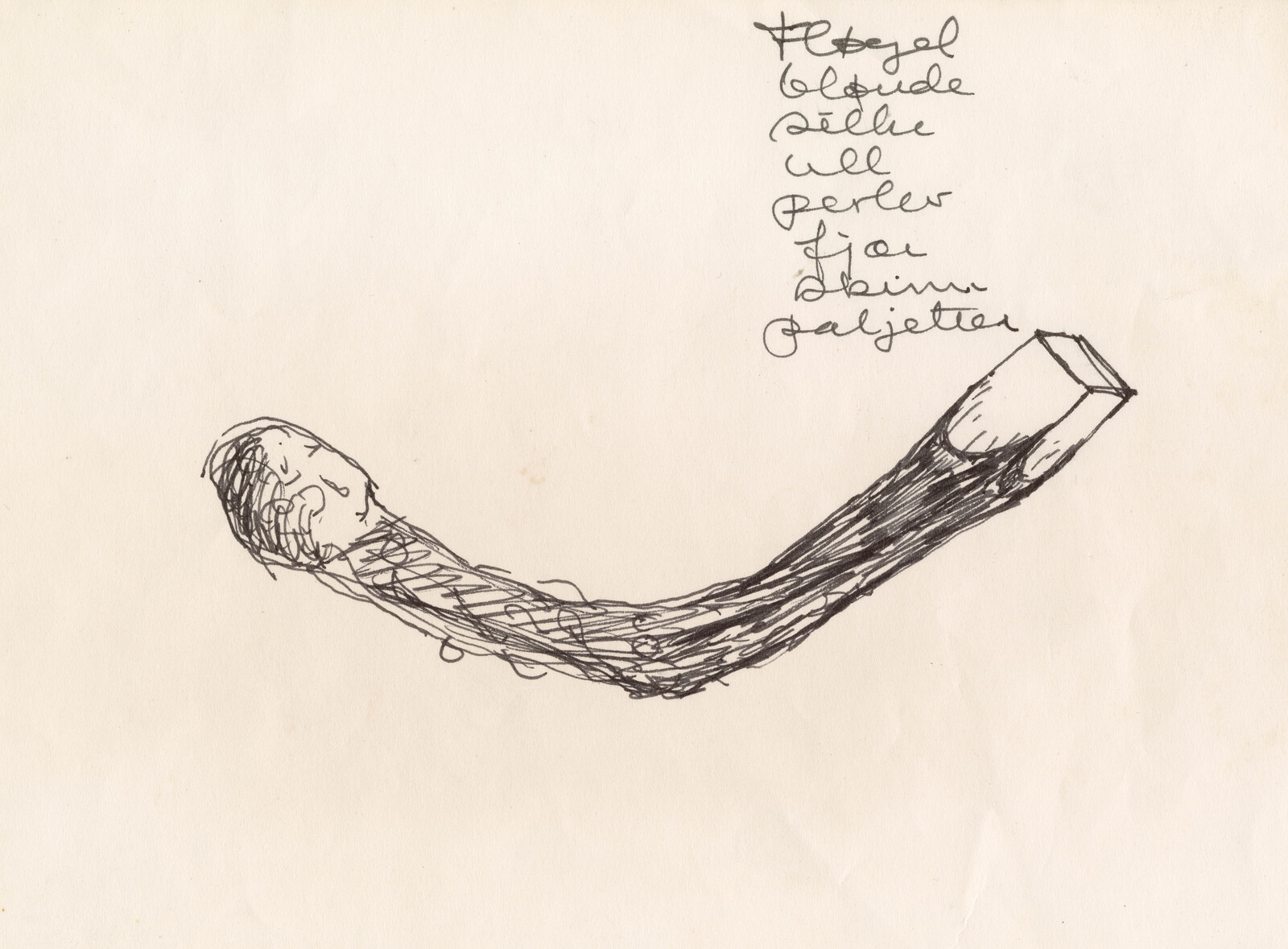On the Verge. Sidsel Paaske (1937-1980)
October 21, 2016–February 26, 2017
The Museum of Contemporary Art
Bankplassen 4
0151 Oslo
Norway
“We play as we practise” was Sidsel Paaske’s motto and watchword. Throughout her career, she was open to new ideas and expressed herself using many different media. She began in the field of textile art, but was soon breaking new “ism-free” ground. With the joy of experimentation in her bones, she immersed herself in a broad range of expressive forms, working freely with different techniques such as watercolours, painting, textiles, ceramics, music, writing, book illustration, sculpture and jewellery.
Paaske was at the centre of Oslo’s art scene in the period 1965–80. Her sculpture Extinguished Match (1966) has been called Norway’s first pop-art work. Some 21 years later, Claes Oldenburg, the “father” of pop art, made a variation on the same theme.
By the time of her sudden death at the age of just 43, she had had a dozen solo exhibitions and participated in as many group shows. She had sung with the American jazz musician Don Cherry and published, illustrated, curated and debated. Paaske was an active campaigner for artists’ rights and had collaborated on audio-visual projects with the likes of Arne Nordheim and Jan Garbarek.
But what happened next?
In Volume 7 of the standard edition of Norsk Kunsthistorie (The History of Norwegian Art), published just three years after her death, Paaske isn’t even mentioned. Although she was the editor of Billedkunstneren from 1978 to 1980, the periodical noted her death with nothing more than the headline “Sidsel Paaske is dead” and a short, elegiac poem. Signed “Gro,” the poem was a personal message from her friend and fellow artist Gro Jessen. The editors never issued a formal statement or full obituary. It wasn’t until 1989 that a commemorative exhibition was organised.
In this exhibition we seek to understand how an artist as complex and interesting as Paaske could be so neglected by posterity. Why has Paaske’s Extinguished Match not been accorded the central place in Norwegian art history, as it deserves? Why have Paaske’s artistic achievements not been taken seriously? And what are the mechanisms that determine the process of canonisation?
Curator Exhibition: Stina Högkvist
Curator of Education: Anita Rebolledo
Project Manager: Christin Fonn Tømte / Marthe Tveitan



